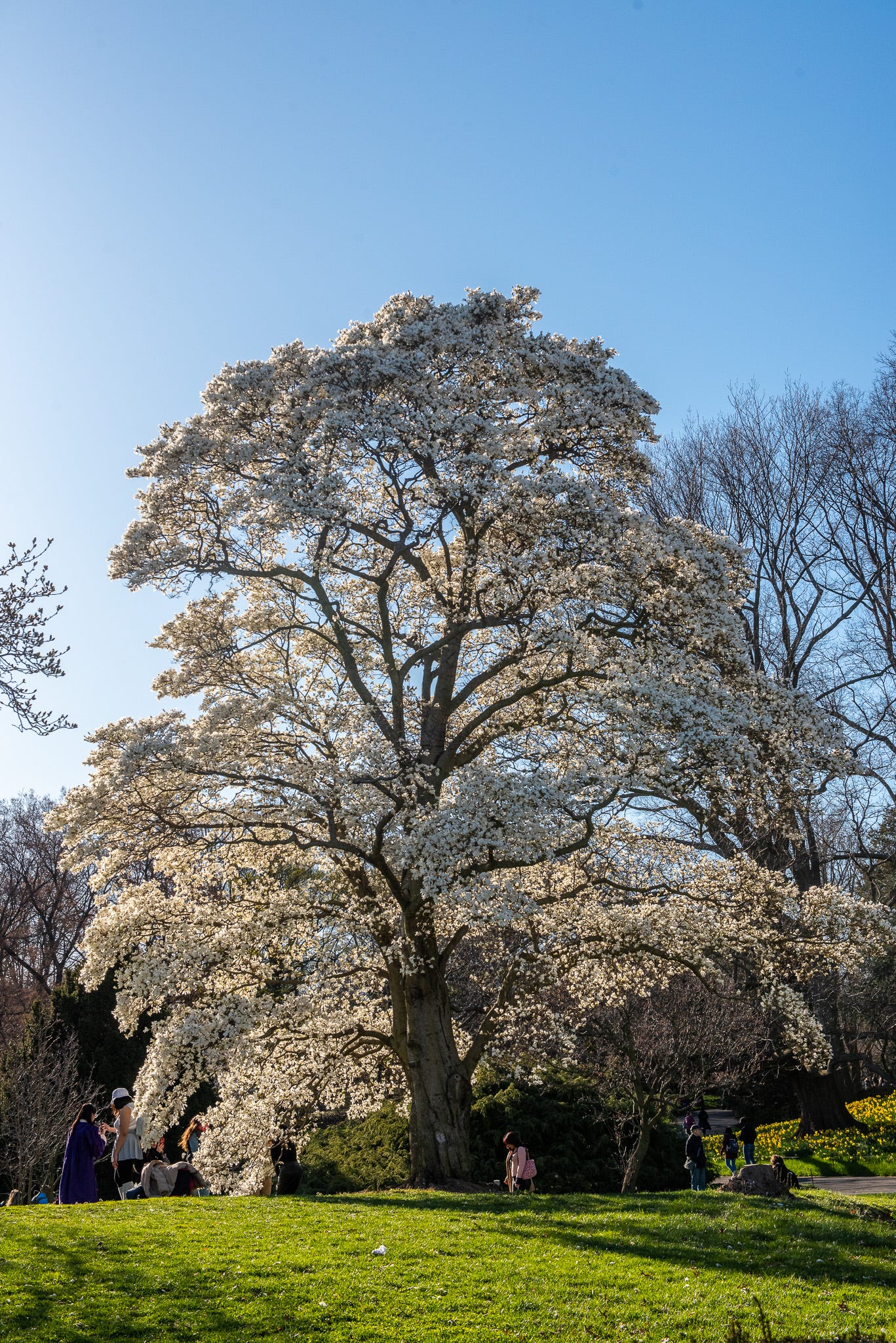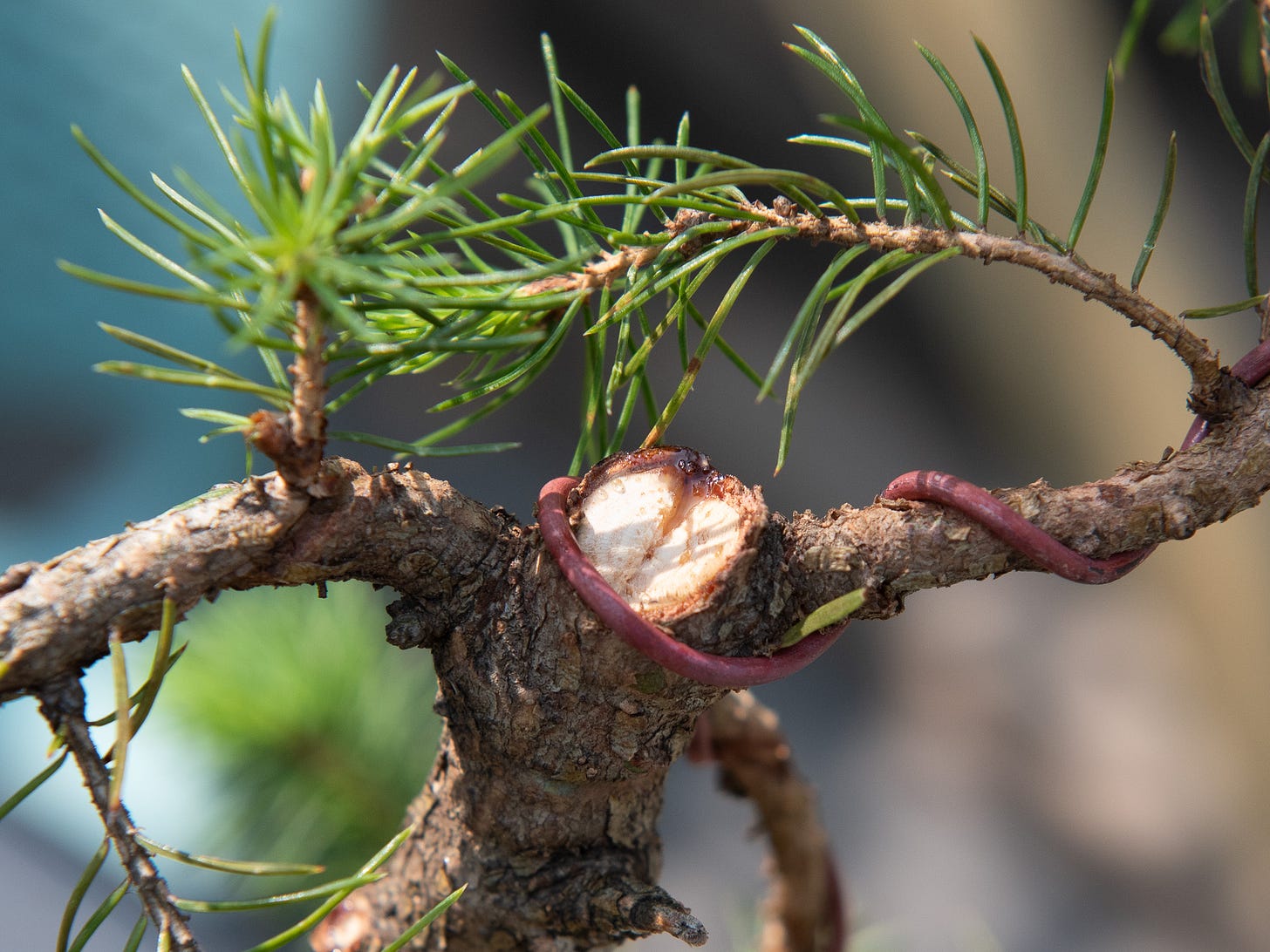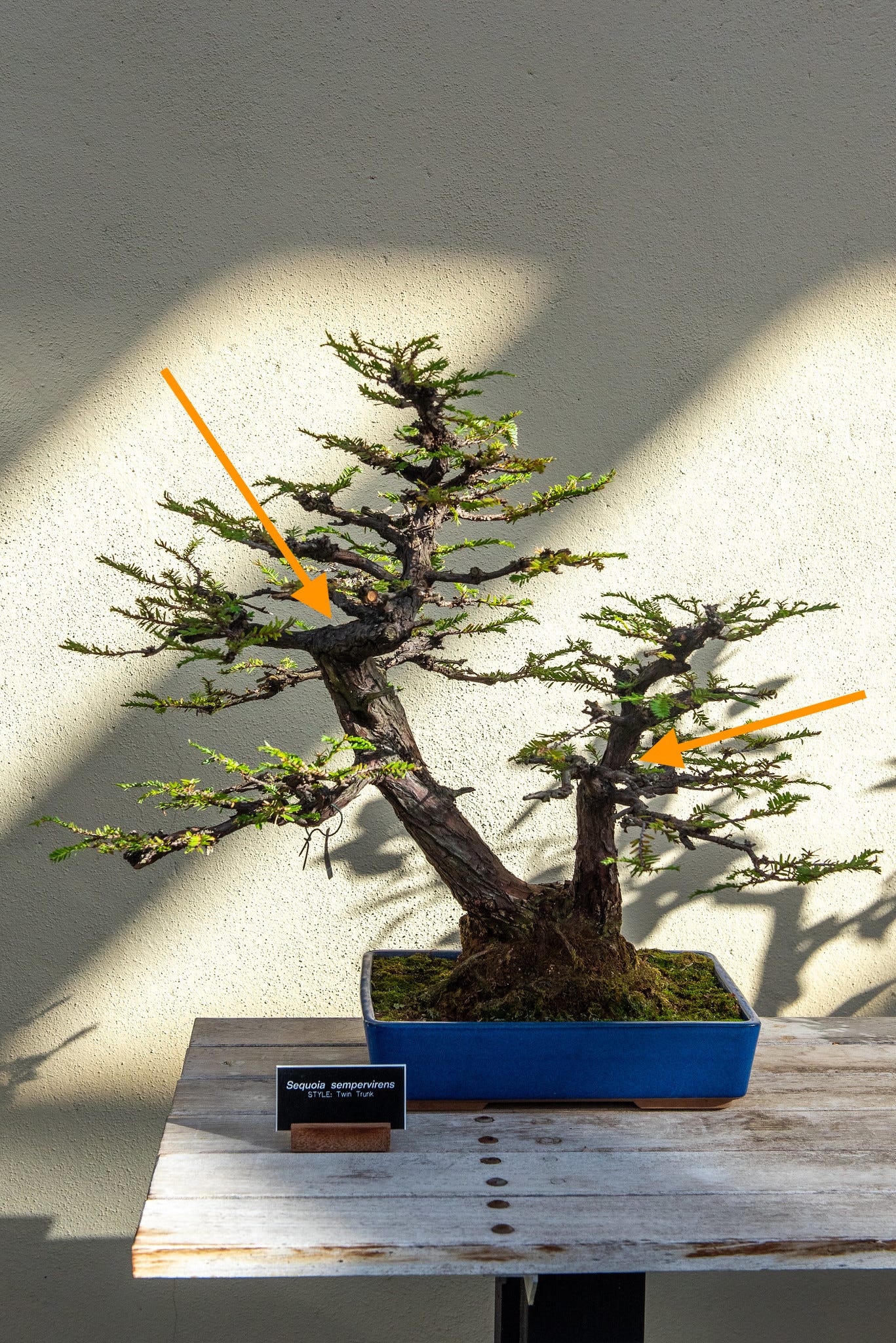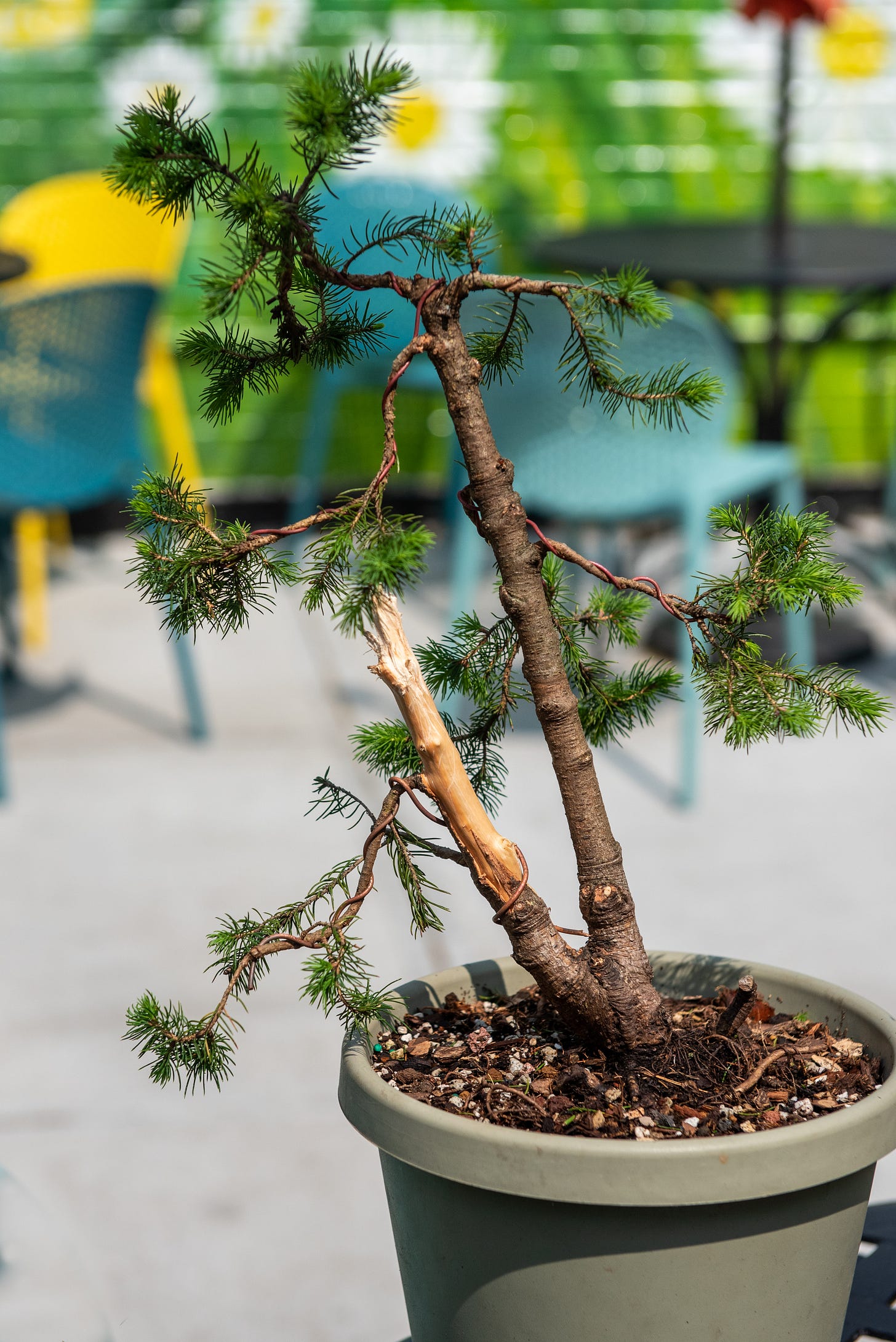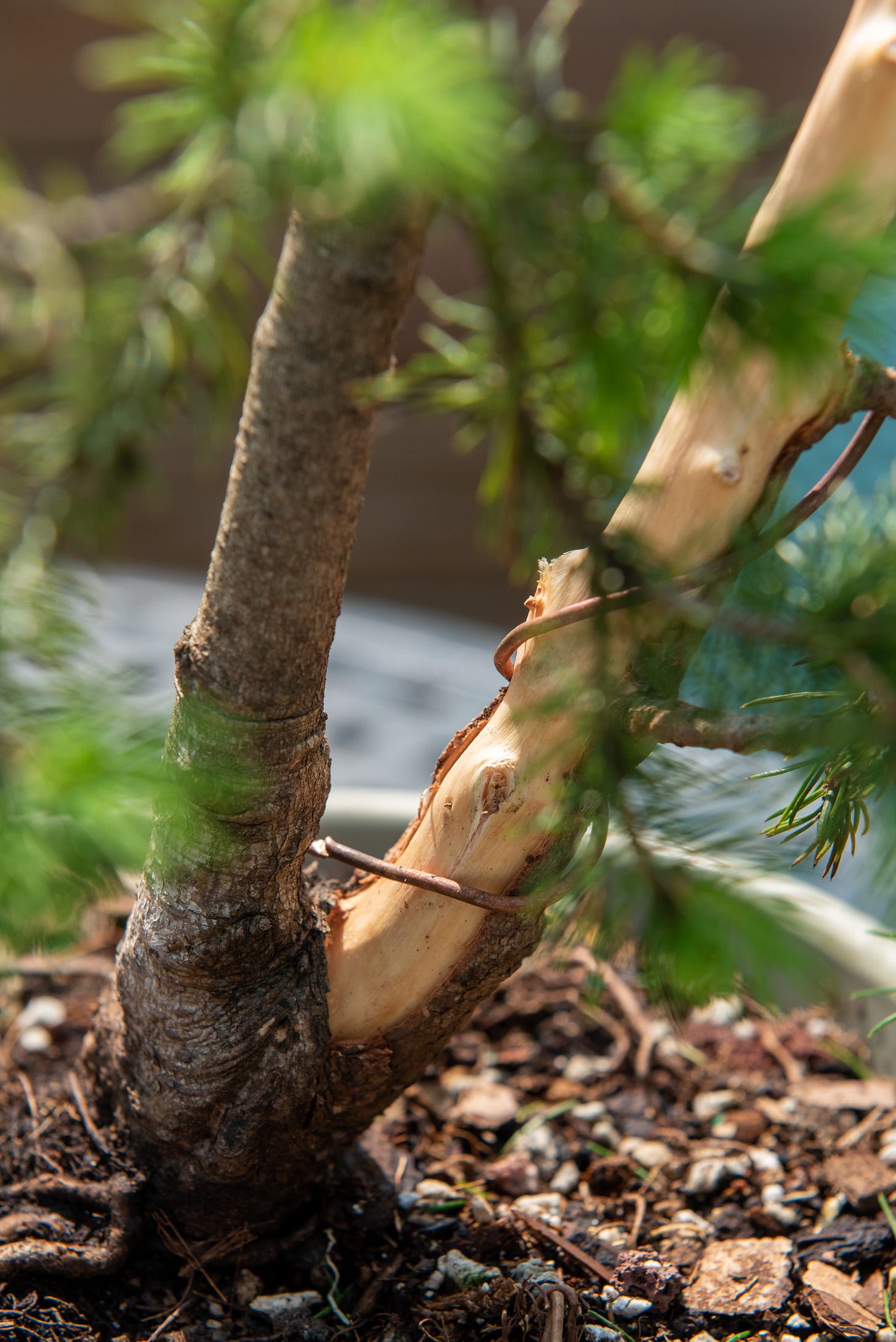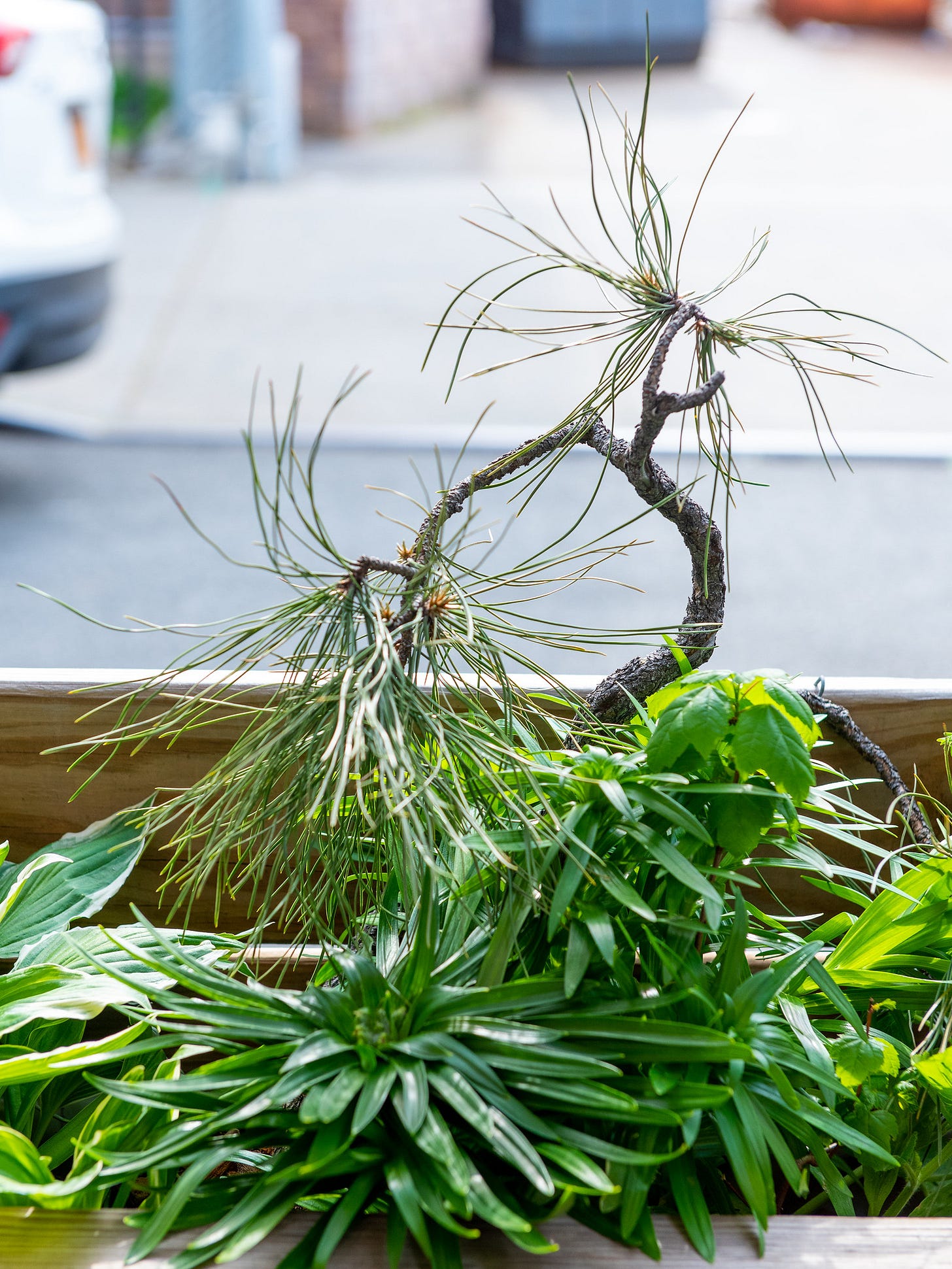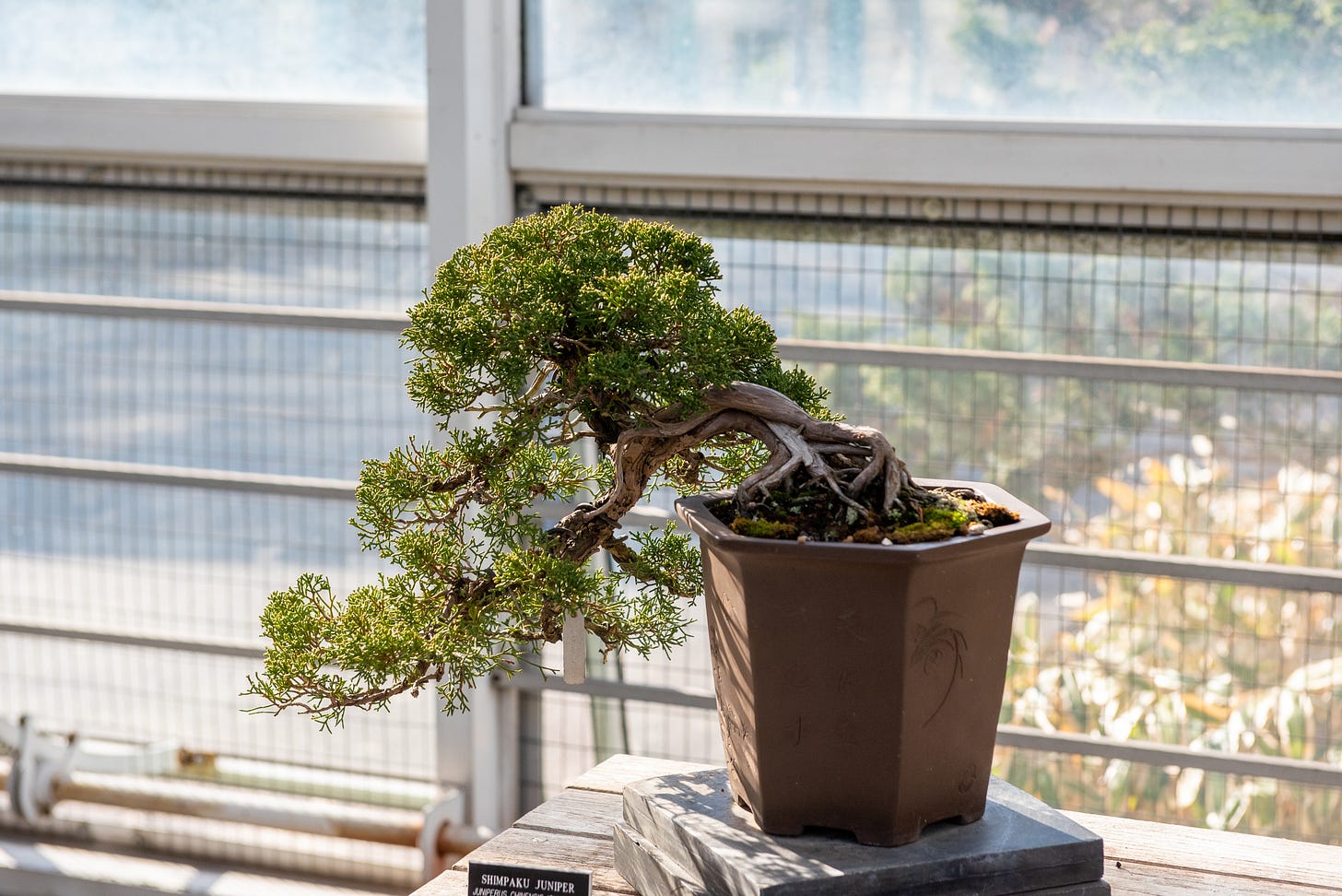Methods of concealment and exposure
How bonsai respond to injury, and what bonsai artists do about it.
Bonsai is an art of appearances, and with appearances come liabilities. Large pruning scars along a tree trunk are one of them. They make the tree look worked-on, rather than natural, which warps the illusion of a mature tree in an untouched landscape. So the scars are best concealed.
I chopped this water jasmine trunk in May. The previous upright design wasn’t working and the tree needed a fresh start. I want to guide the three emerging branch sections into a multi-trunk style. Here’s a magnolia tree that I’m using as inspiration.
Chopping a bonsai trunk adds taper to the trunkline and forces the tree to grow in new, interesting directions. The downside of a trunk chop is a visible wound that will take years to heal over.
Each tree branch is a discrete strip of vascular tissue that can be traced through a maze of bark down to the roots. When one of those tissue segments succumbs to rot or disease, the tree quarantines the branch and lets it die off. Otherwise the decay may creep to other tissues and threaten the health of the whole tree. If an injury, like a trunk chop, rips away bark and exposes the interior wood, nearby living sections will grow over the wound, forming a callous that protects the rest of the tree. Bark acts as a tree’s skin, its armor against invisible carriers of infections. It heals itself the same way.
New growth that results from a trunk chop must be carefully managed. Vigorous growth forms a callous faster, but if a branch grows too much, or in the wrong direction, it will blow the trunkline out of proportion or it won’t look right, and you’ll be back in the pickle of appearances you tried to escape. A bonsai should heal in a way that looks like it was never injured in the first place. As if all its twists and turns were planned from the start.
The two orange arrows in the photo above point to spots where this redwood trunk was likely chopped. You can tell bt the trunk’s tapering diameter and sudden change of direction. The tree is positioned in a way that conceals both pruning scars behind new growth.
I wish I could heal with the elegance of a bonsai. I don’t compartmentalize my injuries as well. Some of them felt as if a limb had been suddenly excised, leaving me with a raw pruning scar along my trunk. When I lose a person or a place I care about, part of me goes with it. It seems unthinkable at first, that it was here and now it isn’t. There must be some clerical error.
I’m bothered by the exposure. Heavy pruning scars expose a tree’s whole vascular system to the world. I have to sit and wait for the wound to callous over. New growth is the only way through it. Again, I’m baffled. The damage was done in minutes. But the healing takes months or years.
Bonsai has another way of dealing with injury: to incorporate exposed deadwood into a tree’s design. Many conifers form these deadwood shards naturally. In bonsai, an exposed spur of deadwood is called a jin, and a strip of deadwood that runs down the side of a branch is called shari.
In the wild, conifers survive this degree of exposure by weathering extreme environments. The fierce dry wind of an alpine spruce forest can render the deadwood inhospitable to sources of decay. Some trees die anyway. The ones we see are the ones that make it.
Bonsai artists mimic this natural preservation through a mineral mixture called lime sulphur. When painted on deadwood, lime sulphur bleaches and dries out the wood, while hardening it against erosion from wind and rain. The effect is only temporary, so you have to re-apply it every few months. I hadn’t got around to applying it to my dwarf Alberta spruce, pictured above. If I did, maybe the tree would still be alive.
I like a good jin and shari. Many of my favorite bonsai have them. I think they add to a tree’s character, revealing the dead ends that had to be taken for the trunk to arrive at where it is today. I want to add one to my ponderosa pine, probably the upward pointing branch along the trunk. Clearly I have more studying to do first.
However as nice as deadwood features are, I think they should be done judiciously. You can only juice so much from old, dead growth before it’s overkill. Even in trees with extreme jin and shari, they’re defined by their living foliage. And that only comes from growing somewhere new.
Tree reading
You can help protect old growth forest in New Hampshire right now. The US Forest Service is taking public comments about their plans to log the region. [NHPR]
Do you want Ents? This is how you get Ents. [Tiktok]


